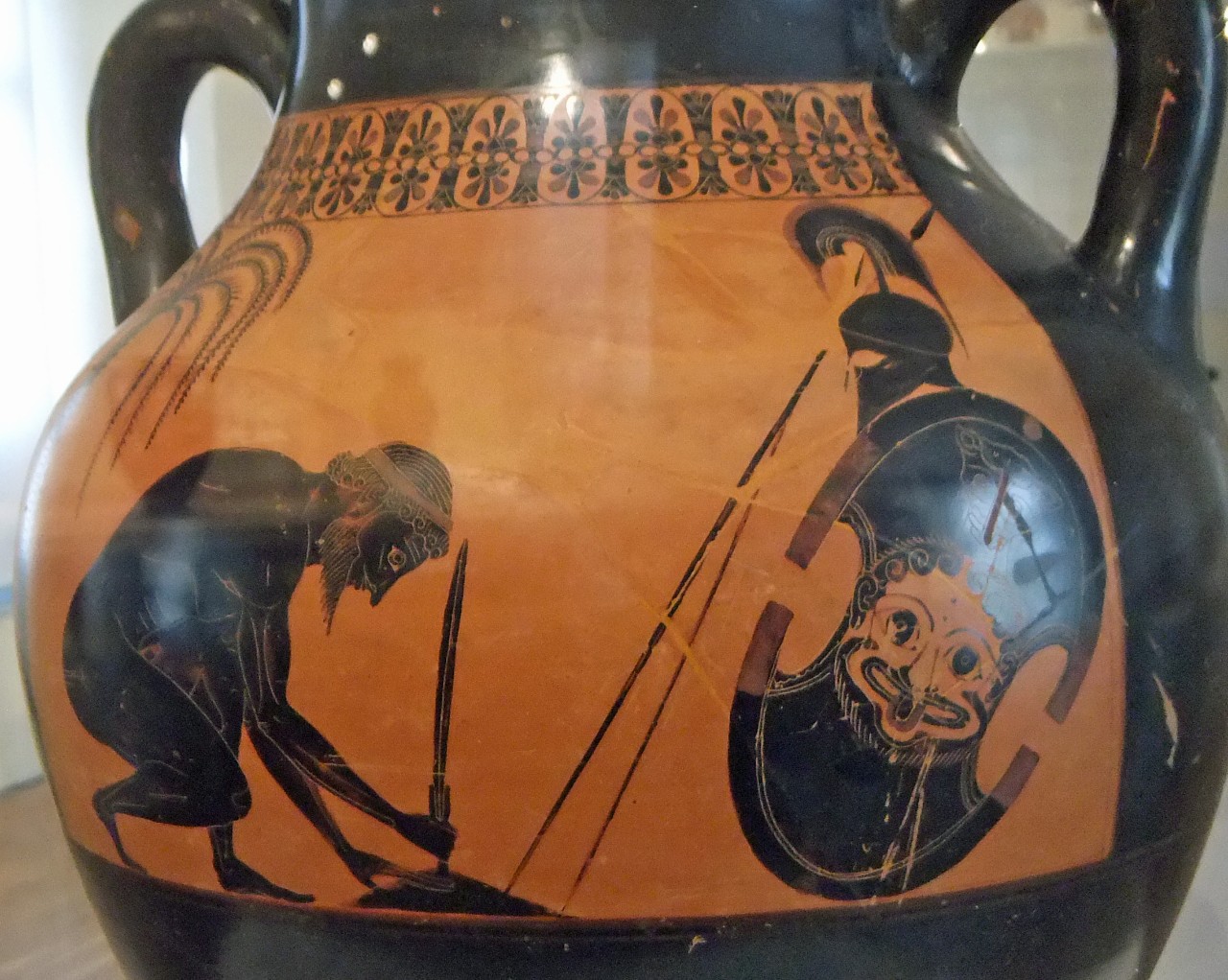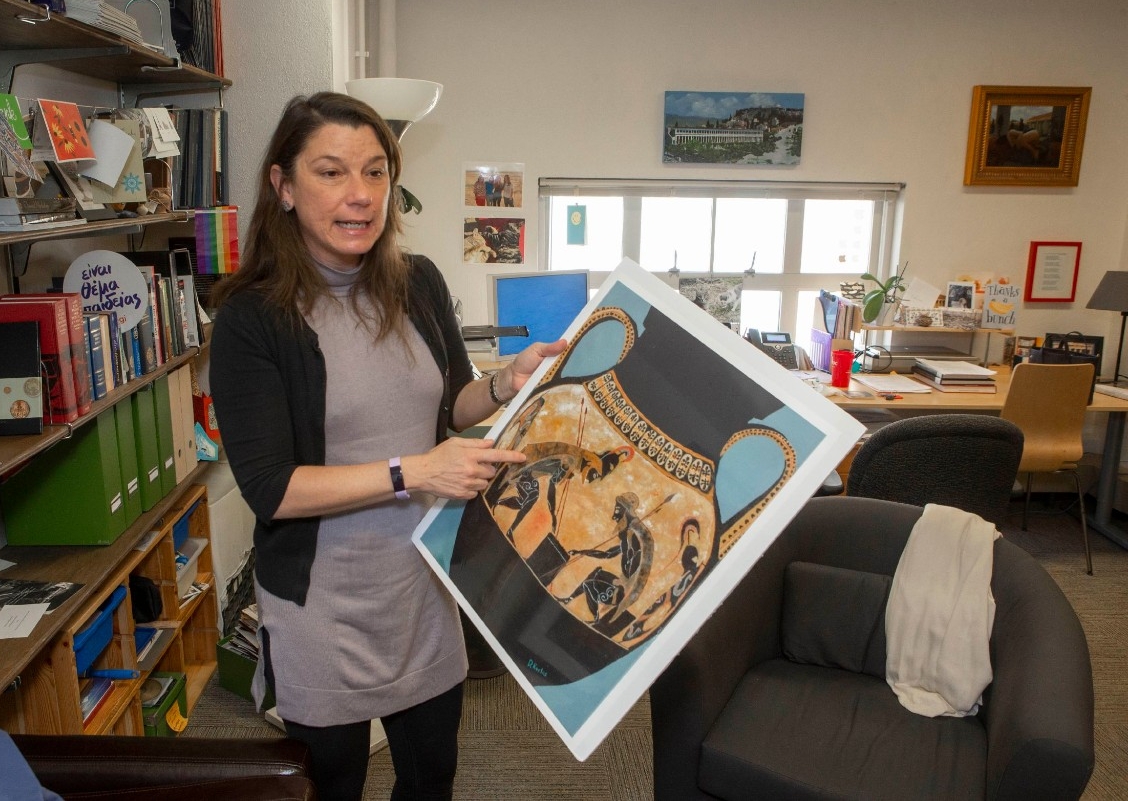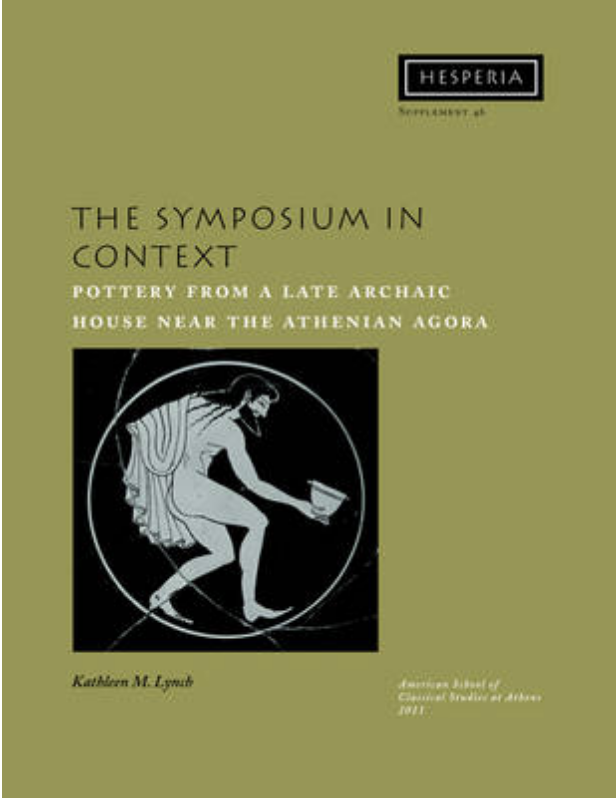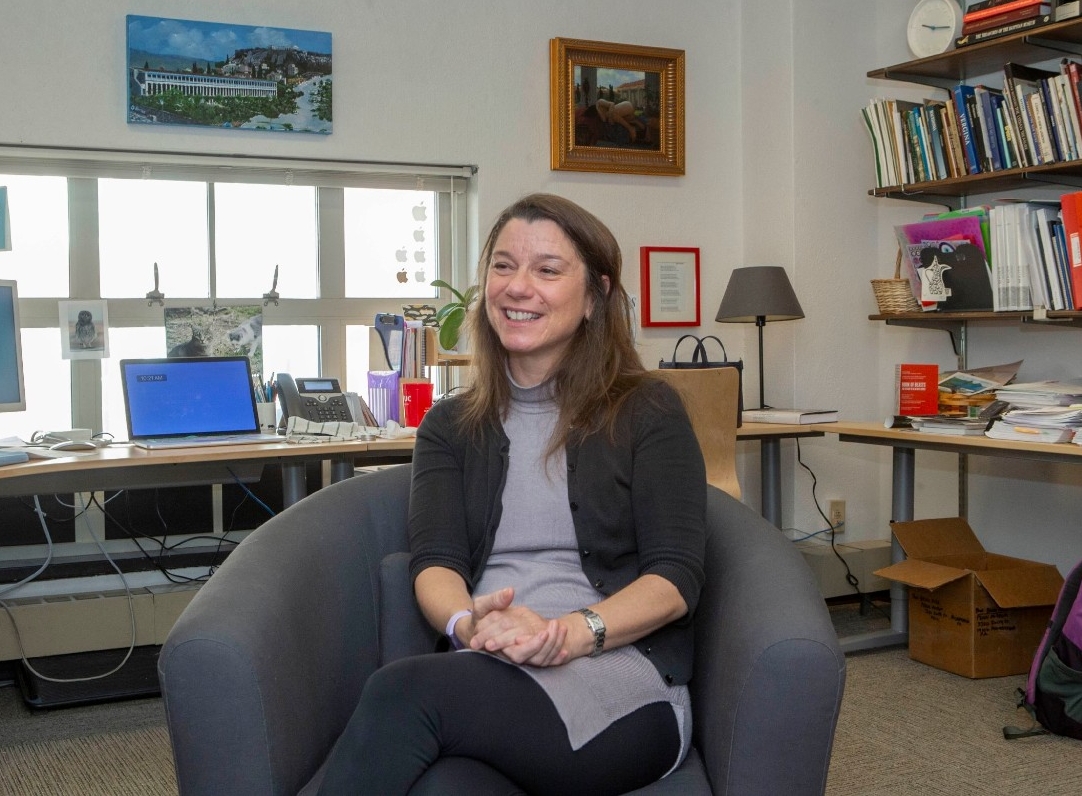
UC 'pottery whisperer' gives talk at national conference
Classics professor Kathleen Lynch is helping us understand the cultural import of ancient ceramics
Could future civilizations learn anything about modern life from our dinnerware?
What would an archaeologist think of your matched set of “Game of Thrones” drinking glasses?
University of Cincinnati professor Kathleen Lynch said pottery from ancient Greece tells us a lot about the social customs, storytelling and mythmaking 2,400 years ago.
Lynch, a professor of classics in UC’s College of Arts and Sciences, is a ceramics specialist who has worked at sites in Italy, Greece, Albania and Turkey. This year, she received a Getty Scholar fellowship to study Athenian pottery and its relationship to Persia, Greece and Rome.
Lynch gave the opening night lecture this week to the Archaeological Institute of America, the world’s largest and oldest archaeological association, during its annual conference Washington, D.C. Her address titled “Conversations with a Pot Whisperer: Archaeological Ceramics and the Stories They Tell” kicked off the annual conference of archaeologists from around the world.
“This is quite a surprise to me and an incredible honor,” she said.

UC Classics professor Kathleen Lynch holds up a painting by Cincinnati artist Dennis Kurlas of a famous ancient Greek vase by Exekias depicting Achilles and Ajax playing dice during a break in fighting during the Trojan War. Photo/Joseph Fuqua II/UC Creative Services
Comparatively few relics of everyday life survive for thousands of years. One exception is the ubiquitous pottery used daily and for special occasions in homes across ancient Athens.
Lynch is an expert in understanding the meaning of pictures and symbols used on the pottery and contextualizing the pottery itself in the broader world culture of the time.
Lynch is the author of the 2011 book “The Symposium in Context: Pottery from a Late Archaic House Near the Athenian Agora,” winner of the prestigious James R. Wiseman Book Award. In it she examines pottery from the Athenian agora or marketplace. The pottery included household cups along with finer ceramics likely used for special occasions.
These serving vessels are associated with a social custom called a Symposium in which men gathered in small groups at a host’s home to talk about the issues of the day over wine mixed with water.
“Each person had his own cup. Everyone drank in rounds so nobody got more drunk than their neighbor,” she said. “The whole point was to get everyone to that happy, tipsy level where tongues are loosened and good times are had but not go over the edge.”
In her book, Lynch wrote of the significance of the Symposium.
"The investment in specialized equipment with figured decoration, in contrast to the plain, multi-functional coarse wares, further signals the importance of this activity," she wrote.
One drinking vessel archaeologists found was decorated with an owl. The reveler who finished his drink would find at the bottom of his empty mug a puzzling reference to a "chou," an enormous jug that could hold the equivalent today of four bottles of wine.
Lynch said inscription, "I was a chou," could be a joke about drinking an entire chou one cup at a time or perhaps was a pun on the hooting sound of an owl.
The Greeks didn’t need to see these narratives on their pottery. They knew them. These were bedtime stories for them.
Kathleen Lynch, UC Classics professor
Lynch has spent her career investigating what artistic pottery tells us about daily life 2,400 years ago. She discovered that typical household ceramics in Greece were adorned with familiar but generic images like field workers stomping grapes or serving wine.
Meanwhile, Greek pottery found abroad in places like Italy featured mythological creatures and Greek heroes. They told stories of Greek tragedies, victories and histories in vivid detail for a foreign audience that cherished the pieces as status symbols and cultural relics.
“Products made for the export market were more elaborately decorated than even those that stayed at home. Some were made for special social activities where people gathered and drank together,” Lynch said. “They look very Greek. But they’re more Greek than pottery used by actual Greeks.”
Similar comparisons can be found in cultures around the world, from Chinese porcelain with stereotypical scenes of pagodas to “I love New York” coffee mugs that no self-respecting New Yorkers would buy for themselves.
“The Greeks didn’t need to see these narratives on their pottery. They knew them. These were bedtime stories for them,” she said.

UC Classics professor Kathleen Lynch is author of "The Symposium in Context," which uses ceramics to explain social customs in ancient Greece.
But what stories they tell.
Greek artist Exekias painted a now-famous vase on display at the Vatican Museums with the images of hero Achilles playing at dice with his friend Ajax during a break in fighting during the Trojan War. Both warriors are still clad in armor and hold twin spears in one hand as they study a game board between them. Achilles is winning the game with a high roll of four to Ajax’s three.
“We know what happens next,” Lynch said.
When fighting resumes, Achilles will die in battle after taking an arrow to his heel (where we get the Achilles heel). Ajax will survive to mourn Achilles but will be so devastated by the war that he will take his own life.
“All of that is portrayed in this pot. It’s a masterful way of telling a story,” Lynch said.
Greek history and mythology are rife with amazing stories of courage, cruelty, victory and betrayal.
Lynch said the Greeks were unparalleled storytellers whose work resonates in pop culture today. The hero’s journey from Homer’s “The Odyssey” in which the protagonist takes on a quest and overcomes all odds before returning home victorious has been duplicated in everything from “Star Wars” and “The Wizard of Oz” to “Lord of the Rings” and “Harry Potter.”
“The story is familiar to us. Harry is living under the stairs now but we know he will win at the end,” she said. “The question is how does he get there?
“This is why I love these stories – the emotion,” Lynch said. “That’s why these stories still appeal to us. They were the first not just to tell a history – we went to war, we won – but to build a story that appeals to our emotions.”
Featured image at top: A vase by the ancient Greek artist Exekias depicts the suicide of Ajax after the Trojan War. Photo/Wikimedia Commons

UC Classics professor Kathleen Lynch is an expert in ancient ceramics. She gave the keynote at this year's annual Archaeological Institute of America conference in Washington, D.C. Photo/Joseph Fuqua II/UC Creative Services
UC Classics in the news
- New York Times: Grave of 'Griffin Warrior' at Pylos Could Be a Gateway to Civilizations
- Washington Post: Archaeologists in Greece find 3,500-year-old royal tombs
- BBC: Bronze Age royal tombs unearthed in Greece
- Archaeology: A Bronze Age Masterpiece
- China Daily: Archaeologists in Greece find 3,500-year-old royal tombs
- National Geographic: Rare Unlooted Grave of Wealthy Warrior Uncovered in Greece
- Smithsonian: This 3,500-Year-Old Greek Tomb Upended What We Thought We Knew About the Roots of Western Civilization
- NPR: Archaeologists Discover Ancient Greek Royal Tombs Dating Back 3,500 Years
- The Guardian: Archaeologists in Greece find 3,500-year-old royal tombs
Next Lives Here
The University of Cincinnati is classified as a Research 1 institution by the Carnegie Commission and is ranked in the National Science Foundation's Top-35 public research universities. UC's graduate students and faculty investigate problems and innovate solutions with real-world impact. Next Lives Here.
Become a Bearcat
- Apply online or get more information about undergraduate enrollment by calling 513-556-1100.
- Learn more about UC's many undergraduate and graduate programs.
Related Stories
Two College Credit Plus high school students receive bachelor’s...
May 4, 2025
Two high school students received bachelor's degrees at the University of Cincinnati's Spring Commencement. Caden Elrod, a senior at Walnut Hills High School in Cincinnati, and Sai Gollamudi, a senior at Centerville High School in Centerville, receive their degrees while also completing their diplomas. They are first high school students in UC's College Credit Plus Program to earn bachelor's degrees.
UC celebrates record spring class of 2025
May 2, 2025
UC recognized a record spring class of 2025 at commencement at Fifth Third Arena.
UC students recognized for achievement in real-world learning
May 1, 2025
Three undergraduate University of Cincinnati Arts and Sciences students are honored for outstanding achievement in cooperative education at the close of the 2024-2025 school year.
